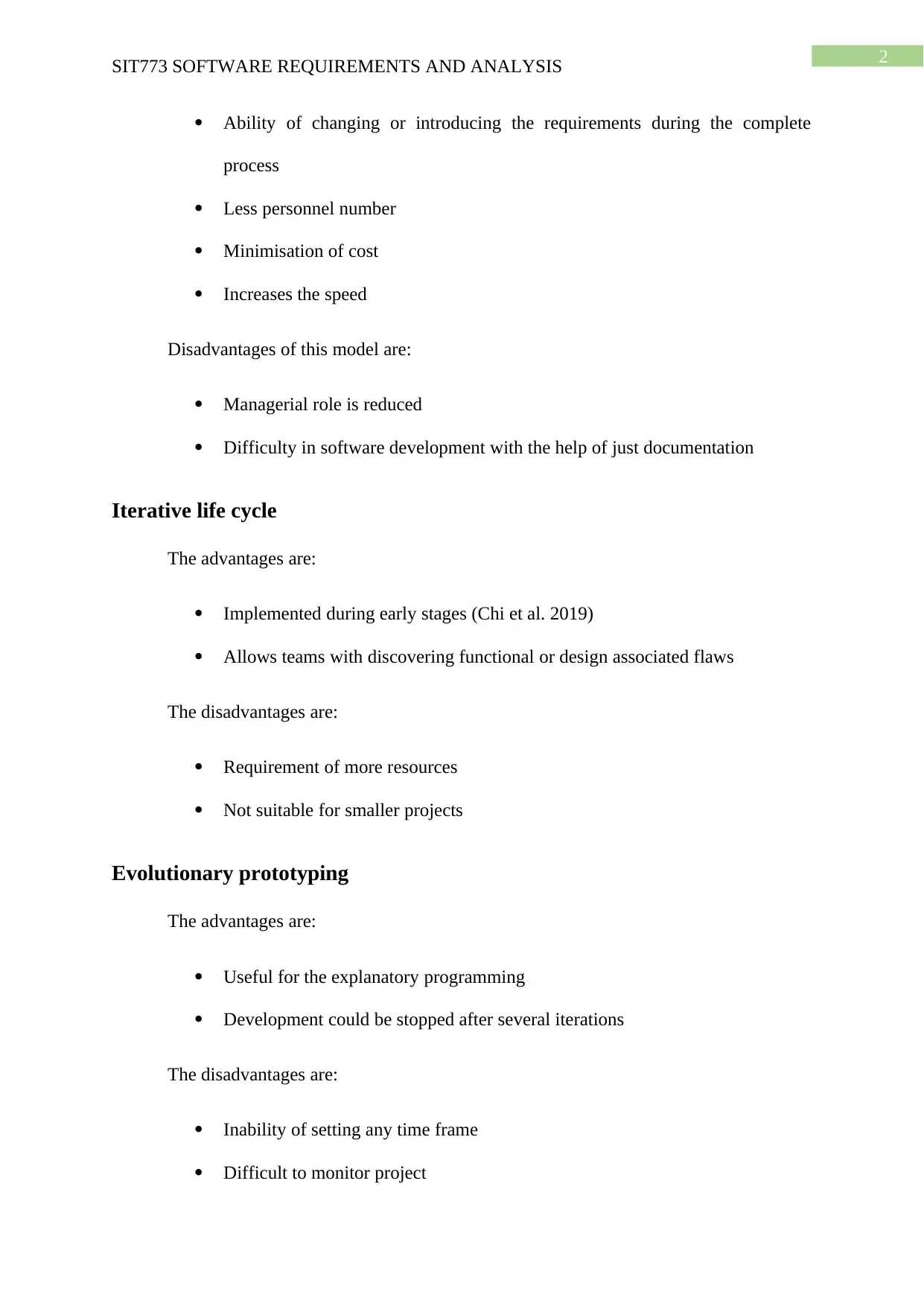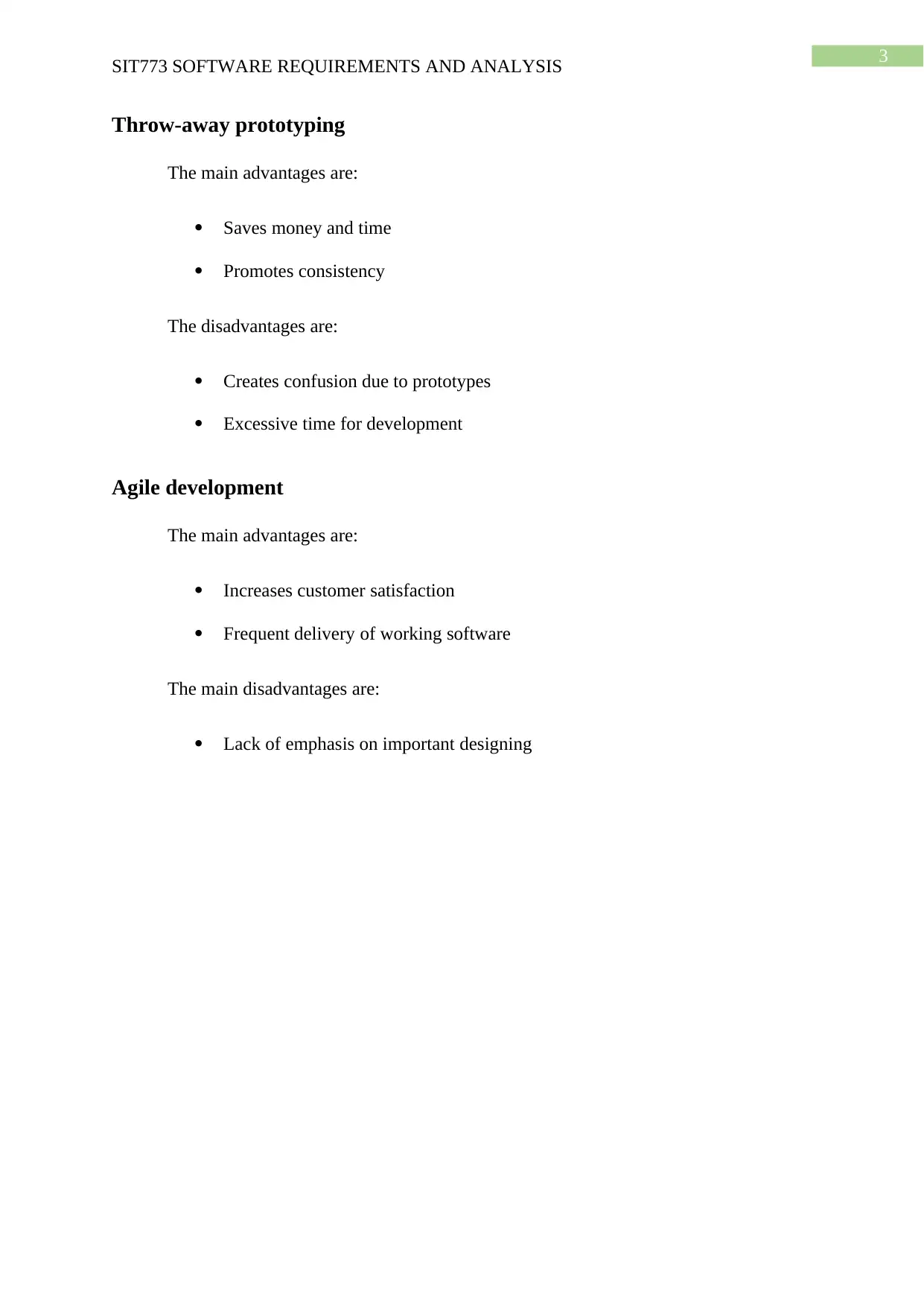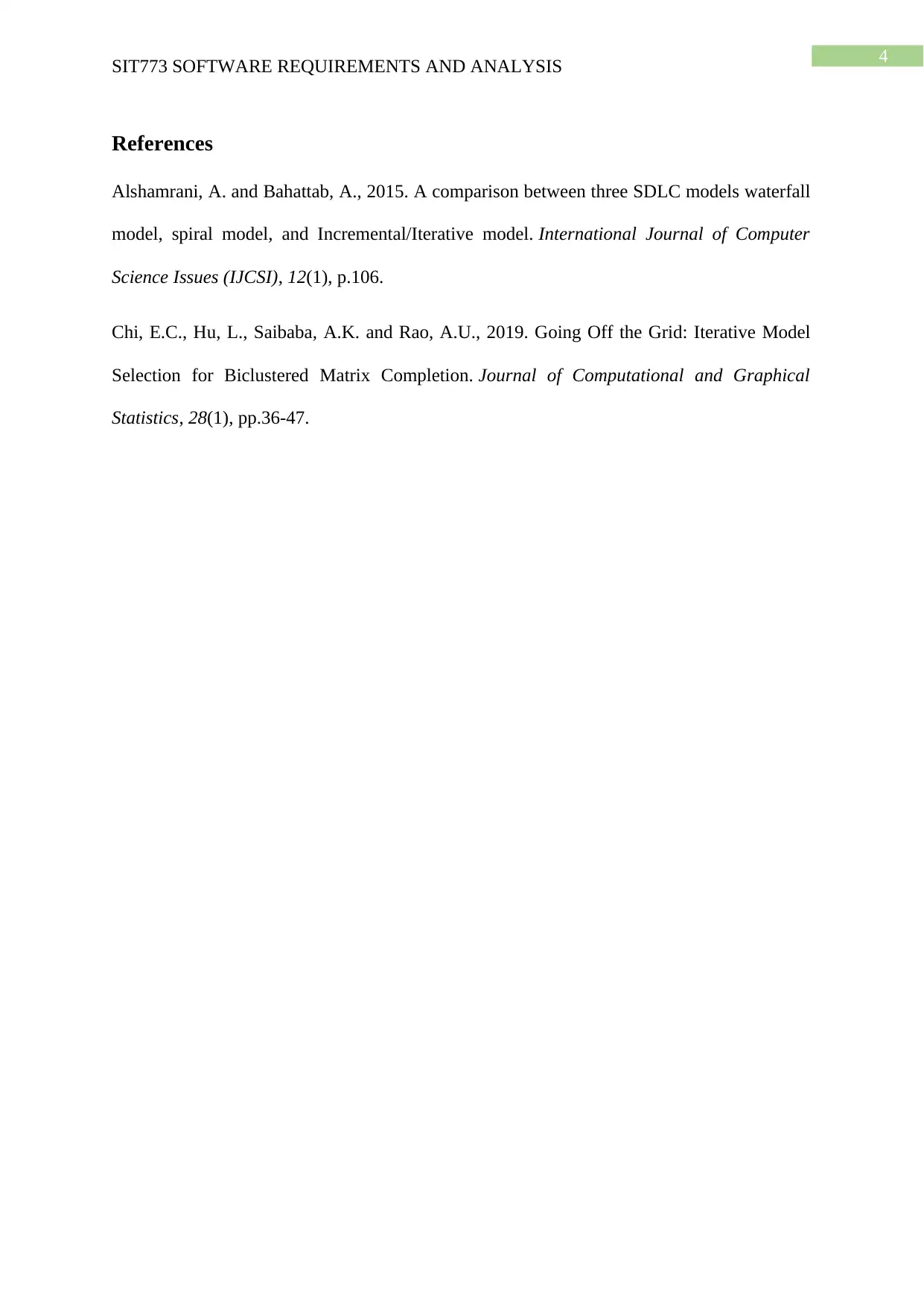SIT773: Comparative Summary of Software Development Life Cycle Models
VerifiedAdded on 2022/12/26
|5
|492
|58
Report
AI Summary
This report provides a comprehensive comparison of several software development life cycle (SDLC) models, including the waterfall model, parallel development model, iterative life cycle, evolutionary prototyping, throw-away prototyping, and agile development. It outlines the main characteristics, advantages, and disadvantages of each model, along with an assessment of the associated risks. The report also examines how each model accommodates changes in requirements during the project lifecycle and analyzes their impact on client satisfaction and project costs. The content is based on the provided assignment brief for SIT773, focusing on the practical application of different SDLC approaches.
1 out of 5










![[object Object]](/_next/static/media/star-bottom.7253800d.svg)